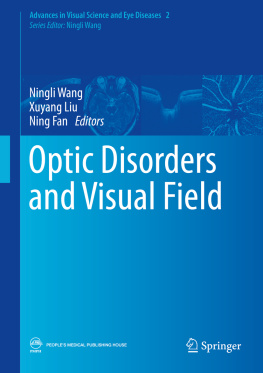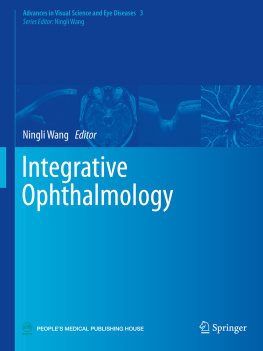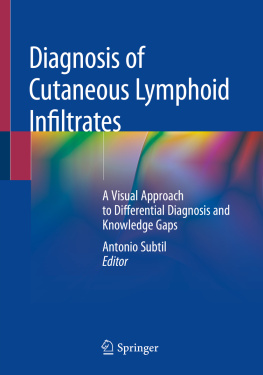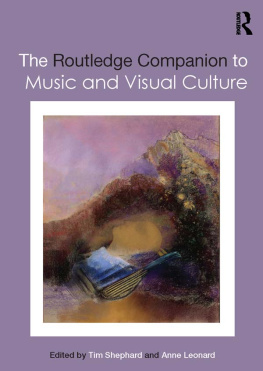Volume 2
Advances in Visual Science and Eye Diseases
Series Editor
Ningli Wang
Beijing Tongren Hospital, Capital Medical University, Beijing, China
Advances in Visual Science and Eye Diseases presents the latest progress and achievement made in visual science and eye diseases for eye care health professionals at different links in the chain of eye care delivery including ophthalmologists, researchers, eye care service providers, health policy makers, and medical students.
The series firstly covers major blinding eye diseases, expounding on their characteristics and the latest development in pathogenesis, up-to-date researches and treatment options of the diseases in detail. Then, the series unfolds the pathogenesis, new diagnosis methods, latest surgery techniques, genetic research, animal modelling studies and translational medicine in glaucoma. Next, the series provides an overall picture on 1. the development of ophthalmology in China along with the contribution of Chinese ophthalmologists to the international community from historical perspective and sheds light on its future development directions; 2. eye epidemiological studies and achievements in blindness prevention in China; 4. holistic view on the systematic relationship between the eye and other organs as well as the relationship between eye diseases and systematic diseases. We hope readers can benefit from this series by enriching their latest knowledge in no matter visual science or clinical management of eye diseases.
Ningli Wang is a professor at Beijing Tongren Hospital affiliated to Capital Medical University, Beijing, China. He is also the director of Tongren Eye Center, Beijing, China.
More information about this series at http://www.springer.com/series/16143
Editors
Ningli Wang , Xuyang Liu and Ning Fan
Optic Disorders and Visual Field
Editors
Ningli Wang
Beijing Tongren Hospital, Capital Medical University, Beijing, China
Xuyang Liu
Xiamen Eye Center of Xiamen University, Xiamen, China
Shenzhen Eye Hospital, Shenzhen University, Shenzhen, China
Ning Fan
Shenzhen Eye Hospital, Shenzhen University, Shenzhen, China
ISSN 2524-566X e-ISSN 2524-5678
Advances in Visual Science and Eye Diseases
ISBN 978-981-13-2501-4 e-ISBN 978-981-13-2502-1
https://doi.org/10.1007/978-981-13-2502-1
Library of Congress Control Number: 2018967944
Springer Nature Singapore Pte Ltd. & People's Medical Publishing House, PR of China 2019
This work is subject to copyright. All rights are reserved by the Publishers, whether the whole or part of the material is concerned, specifically the rights of translation, reprinting, reuse of illustrations, recitation, broadcasting, reproduction on microfilms or in any other physical way, and transmission or information storage and retrieval, electronic adaptation, computer software, or by similar or dissimilar methodology now known or hereafter developed.
The use of general descriptive names, registered names, trademarks, service marks, etc. in this publication does not imply, even in the absence of a specific statement, that such names are exempt from the relevant protective laws and regulations and therefore free for general use.
The publisher, the authors, and the editors are safe to assume that the advice and information in this book are believed to be true and accurate at the date of publication. Neither the publisher nor the authors or the editors give a warranty, express or implied, with respect to the material contained herein or for any errors or omissions that may have been made. The publisher remains neutral with regard to jurisdictional claims in published maps and institutional affiliations.
This Springer imprint is published by the registered company Springer Nature Singapore Pte Ltd.
The registered company address is: 152 Beach Road, #21-01/04 Gateway East, Singapore 189721, Singapore
Preface
In our clinical practice, follow-up observation is generally carried out especially on those cases with unexpected visual function loss, with a hope of finally figuring out the reasons for the impaired vision and visual field. In this way, a large number of cases have been collected. Now, we feel that it is worthy of carefully summarizing the enlightenment, experience, and lessons brought to us when we review these cases. Consequently, the book is compiled based on the analyses of more than 100 visual pathway-related cases with certain changes in the visual fields.
We have got several insights that we would like to share with the readers during the compilation of the book:
Typical visual field defects, such as bitemporal hemianopia caused by pituitary adenoma, usually would not be misdiagnosed. However, we have found that some atypical visual field changes are actually typical when we track carefully and such cognitive transformation process is actually the process of improvement in our understanding of these diseases.
We strongly feel that the multidisciplinary approach and integrated medicine contributed greatly to the analysis of the difficult and real cases.
There are some cases which made us feel at our wits end, but we still obtained their final diagnoses through molecular genetics approaches that helped us find a way out.
In this book, most of the typical visual field changes have been described in the first two chapters, Visual Field-related Anatomy of Visual Pathway and Interpretation of Visual Field Test. Therefore, those visual field changes that can be recognized at a first glance based on visual field impairment are not mainly discussed in this book. Although we have found the causes of visual filed defects in some cases mentioned in the book, the understanding of the primary reasons is far from enough. In another word, the pathophysiology and molecular genetics mechanisms of these diseases still need further exploration, and the further findings will be presented as one of the main contents of the book republished several years later, which means the tracking of the diseases mentioned in this book has not stopped yet. It is also worth noting that the diagnoses and analyses of these diseases still have many aspects worthy of discussing, and meanwhile, we have also consulted many experts worldwide for their opinions. Our greatest hope after the publication of the book is to hear from the experts and readers from both ophthalmology and non-ophthalmology specialties.
The book is compiled on the basis of the cases collected through years by the authors, but its compilation is completed in less than one year. Therefore, oversights and deficiencies can hardly be avoided and any correction or advice from the readers would be really appreciated.
Ningli Wang
Xuyang Liu
Ning Fan
Beijing, China Shenzhen, China Shenzhen, China
July 10, 2018
Acknowledgments
The authors gratefully acknowledge the support from our colleagues including













